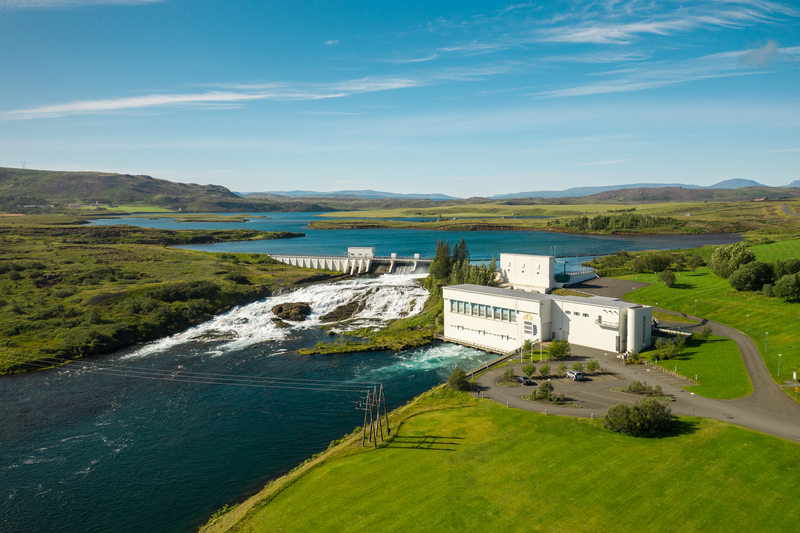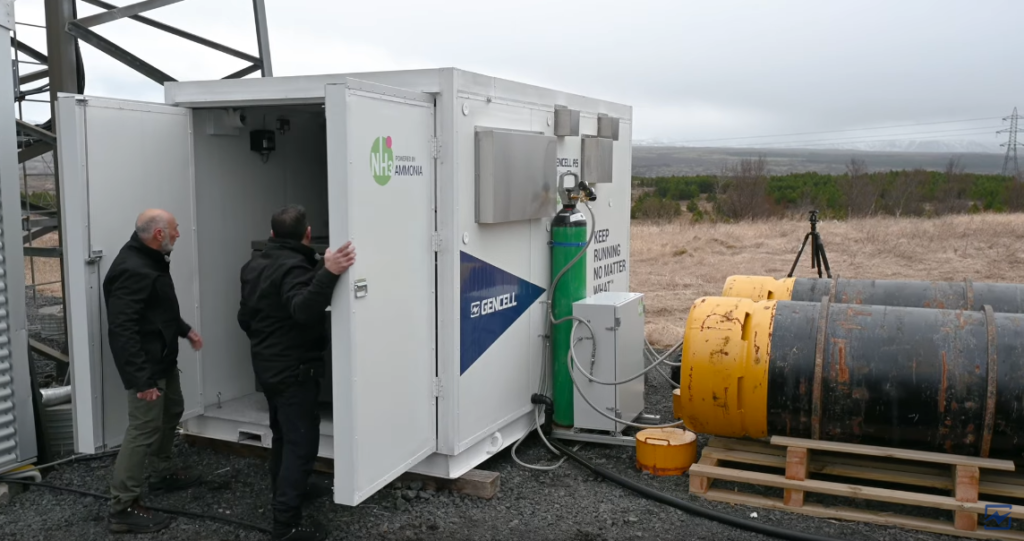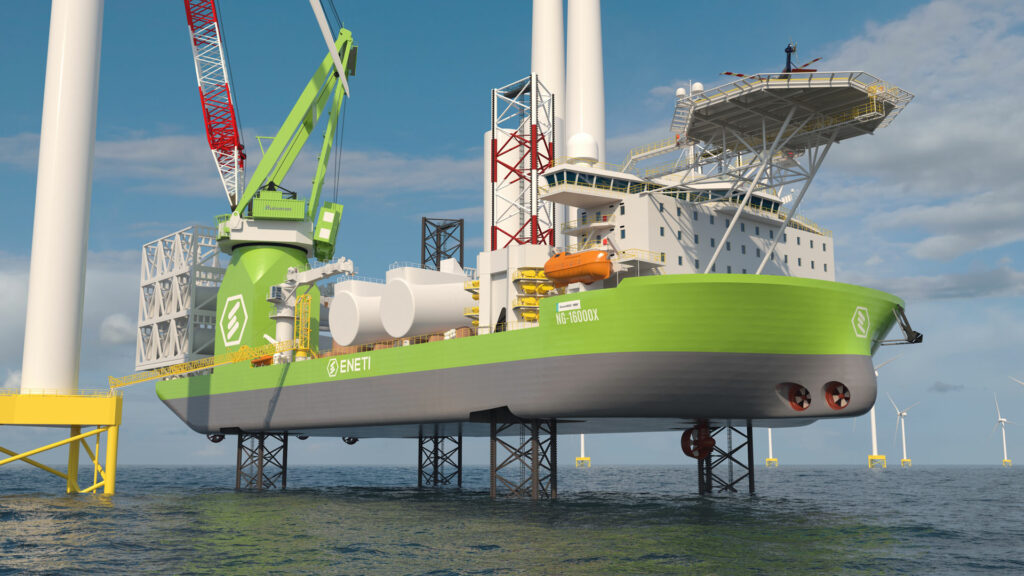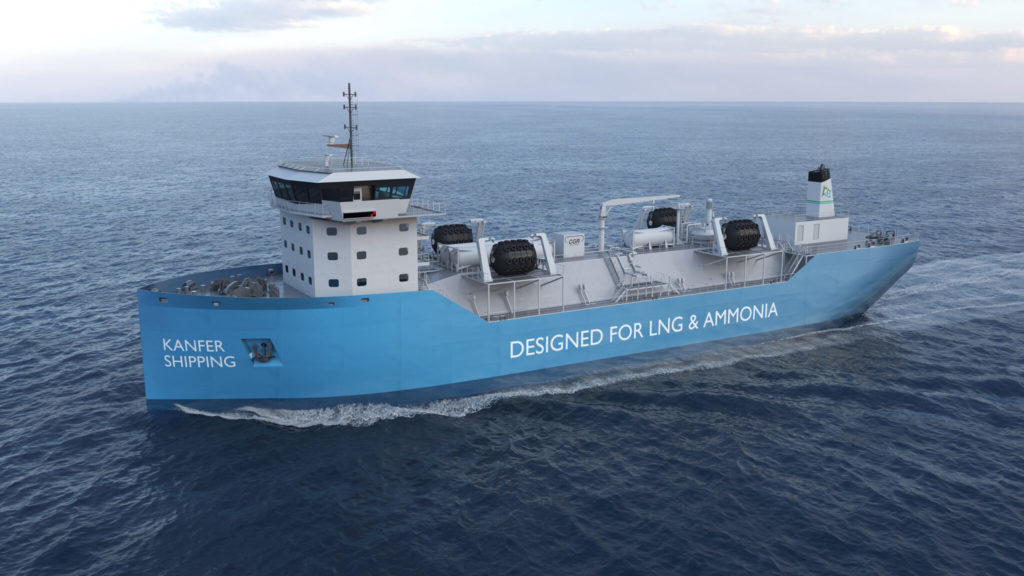The Ammonia Wrap: a roadmap for ammonia-fueled gas turbines in Asia and more
By Julian Atchison on June 23, 2021
Welcome to the Ammonia Wrap: a summary of all the latest announcements, news items and publications about ammonia energy.
A roadmap for ammonia-fueled gas turbines in Asia
GE and IHI Corporation signed a new MoU this week to cooperate on the development of an “Ammonia Gas Turbine Business Roadmap” for Asia. The two organisations will conduct research & analysis into: i) the market volumes of ammonia potentially available, and ii) feasibility studies into the use of ammonia feedstock for power generation in existing gas turbines across Asia.
Ammonia solutions in Iceland

Iceland’s national power company Landsvirkjun and the Port of Rotterdam recently wrapped up a joint study exploring green hydrogen export between Iceland and Rotterdam (hydrogen produced in Iceland would be liquefied or converted to a carrier – like ammonia – for transport). Such an initiative isn’t just technically feasible – it’s also “financially attractive” and could amount to between 200 and 500 MW of electrolyser capacity by the second half of this decade. Last year Landsvirkjun began the process of developing hydrogen production capacity at its Ljósifoss hydropower station.
And Gencell has successfully demonstrated its off-grid, ammonia-fed, integrated alkaline fuel cell system in a field trial near Reykjavik. An emergency communications tower owned by Neyðarlínan ohf (Iceland’s national telecom provider) was powered continuously for 1500 hours through all weather conditions by Gencell’s A5 system. The A5 is fed with liquid ammonia fuel, which is then cracked and the hydrogen consumed in an alkaline fuel cell to generate stationary power.
IMO sets new decarbonisation milestone
The IMO has adopted a new regulation to drive the decarbonisation of global shipping. Scheduled to be enforced by 2023, New Regulation 28 mandates: “a linear reduction in the in-service carbon intensity of ships between 2023 and 2030, such that the global fleet achieves an average reduction of at least 40% by 2030 when compared with 2008”. Browse more reporting on the changes here thanks to Lloyd’s Register (summary changes are in the IMO MEPC 76 Report) Two related, pressing issues being discussed by IMO members – a potential carbon price and mechanisms for lifecycle GHG accounting for alternative maritime fuels – are yet to be resolved, however.
New ammonia-powered vessels planned
- Eneti’s first wind turbine installation vessel (also known as a “jack up”) will be designed to run on either LNG or ammonia and is scheduled to hit the water in 2024. Houston-based NOV will design the vessel, which will be built by South Korea’s Daewoo Shipbuilding and Marine Engineering (DSME).
- Oceania Marine Energy (Australia) and Kanfer Shipping (Norway) have signed a letter of intent to bring the world’s first ammonia-ready LNG bunkering vessel to Australia. Oceania is looking to service iron ore export ships operating off the Pilbara coast in Western Australia.
- And Höegh Autoliners – who first announced plans for their ammonia-ready car carrier back in May – are considering a stock exchange listing to finance development of twelve Aurora Class vessels.
Maritime study developments
The Center for Zero-Carbon Shipping will drive the Green Fuels Conversion Optionality Study. The study (to be completed at the end of this year) aims to produce reliable estimates for the economics of converting existing vessels to alternative maritime fuels. Read more in this interview with the Center’s Head of Onboard Vessel Solutions, Claus Graugaard.
And Eastern Pacific Shipping has agreed to a joint study with Nanyang Technological University (Singapore) that will explore the use of ammonia as an alternative marine fuel, as well as assessing all aspects of bunkering safety. EPS run one of the world’s largest independent gas cargo-carrying fleets (including ammonia).
Australian updates: Fortescue, AREH and Itochu in Gladstone

Fortescue Future Industries is a step closer to its Tasmanian ammonia export project. FFI signed a new land access deal with the Tasmania Port Corporation this week, with a final investment decision on the 200 MW project due sometime this year.
News from the Asian Renewable Energy Hub, with the Australian federal government deciding the project’s environmental impact referral was not suitable to assess in its current form. Given that environmental approval for the AREH at a state level is progressing without any problems (and that late last year the federal government fast-tracked AREH by awarding it “Major Project Status“), Development Manager Andrew Dickson is confident a revised impact referral will address any and all concerns, and the project will continue towards a final investment decision.
And Itochu has given financial support to a blue ammonia project in Gladstone, Queensland. Australian Future Energies is targeting blue hydrogen and ammonia production from coal and biomass, with emissions to be captured and utilised in soft drinks, processed foods, industrial gases and building materials.
Fertiglobe joins Abu Dhabi blue ammonia project
Fertiglobe (an OCI subsidiary) has signed an agreement to join ADNOC’s large-scale blue ammonia project in Ruwais, Abu Dhabi (first reported in last month’s Ammonia Wrap). The companies will embark on pre-FEED and FEED activities, with a final investment decision expected next year.
Statkraft’s Porsgrunn plans
We know so much about two members (Yara and Aker) of the consortium working to decarbonise the Porsgrunn ammonia production plant in Norway. But the consortium’s other member is less well-known. Norway’s state-owned hydropower company Statkraft (who already has green ammonia plans of its own in Svalbard) is developing a clear strategic focus on ammonia going forward – learn more in this interview with Statkraft Vice President Ulf Eriksen.
Get the Ammonia Wrap straight to your inbox every week
Make sure you’re signed up for AEA email updates, including our weekly newsletter that features articles just like this one.


